FINDING THE AREA OF A COMPOSITE FIGURE
Subscribe to our ▶️ YouTube channel 🔴 for the latest videos, updates, and tips.
A composite figure is made up of simple geometric shapes.
To find the area of a composite figure or other irregular-shaped figure, divide it into simple, non overlapping figures.
Find the area of each simpler figure, and then add the areas together to find the total area of the composite figure.
Example 1 :
Find the area of the figure given below.

Solution :
Step 1 :
Separate the figure into smaller, familiar figures: a parallelogram and a trapezoid.
Step 2 :
Find the area the parallelogram.

Base (b) = 10 cm
Height (h) = 1.5 cm
Use the formula.
A = bh
A = 10 · 1.5
= 15
The area of the parallelogram is 15 square cm.
Step 3 :
Find the area the trapezoid.

Base1 (b1) = 7 cm
Base2 (b2) = 10 cm
Height (h) = 1.5 cm
Use the formula.
A = (1/2)h(b1 + b2)
= (1/2)(1.5)(7 + 10)
= (1/2)(1.5)(17)
= 12.75
The area of the trapezoid is 12.75 square cm.
Step 4 :
Add the areas to find the total area.
A = 15 + 12.75
= 27.75
So, the area of the given composite figure is 27.75.
Example 2 :
Find the area of the figure given below.
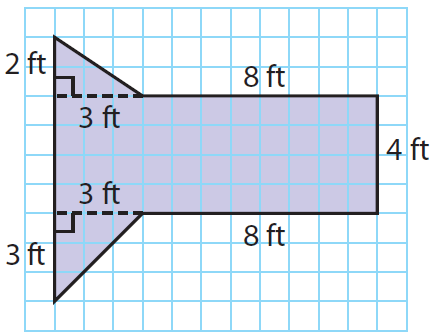
Solution :
Step 1 :
Separate the figure into smaller, familiar figures: a two triangles and a rectangle.
Step 2 :
Find the area the first triangle.

Base (b) = 3 ft
Height (h) = 2 ft
Use the formula.
A = (1/2)bh
= (1/2)(3)(2)
= 3
The area of the first triangle is 3 square ft.
Step 3 :
Find the area the rectangle.
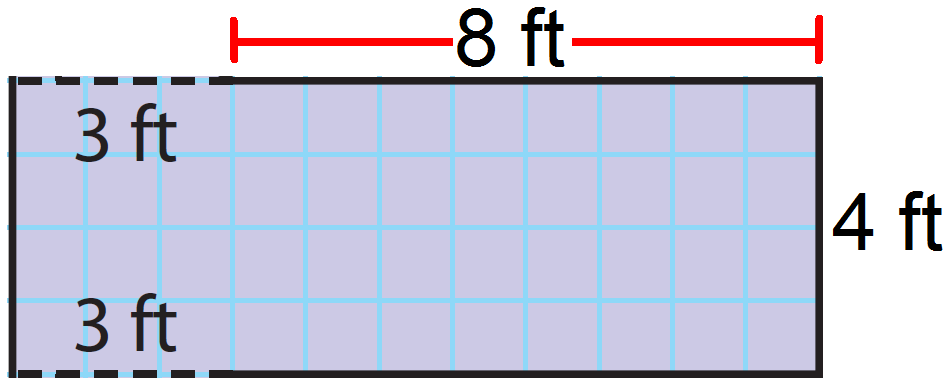
Length (l) = 8 + 3 = 11 ft
Height (h) = 4 ft
Use the formula.
A = l x w
= 11 x 4
= 44
The area of the rectangle is 44 square ft.
Step 4 :
Find the area the second triangle.
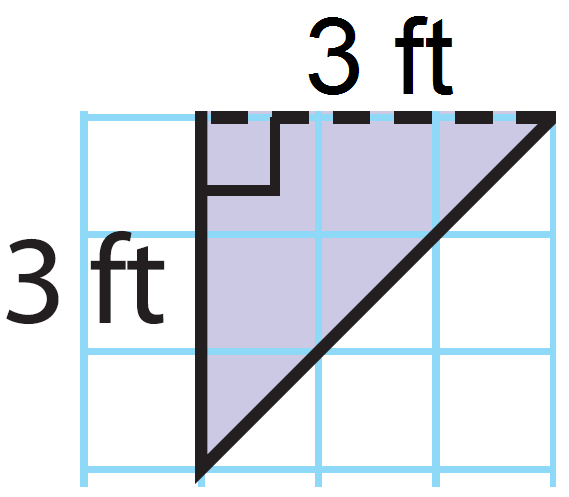
Base (b) = 3 ft
Height (h) = 3 ft
Use the formula.
A = (1/2)bh
= (1/2)(3)(3)
= 4.5
The area of the second triangle is 4.5 square ft.
Step 5 :
Add the areas to find the total area.
A = 3 + 44 + 4.5
= 51.5
So, the area of the given composite figure is 51.5 square feet.
Example 3 :
Find the area of the figure given below.

Solution :
Step 1 :
Separate the figure into smaller, familiar figures: a square and a semicircle.
Step 2 :
Find the area the square.
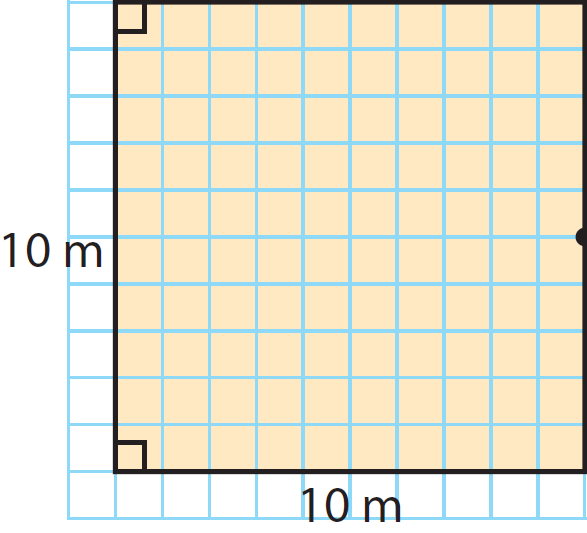
Length of each side = 10 m
Use the formula.
A = Side x Side
= 10 x 10
= 100
The area of the rectangle is 100 square meter.
Step 3 :
Find the area the semicircle.
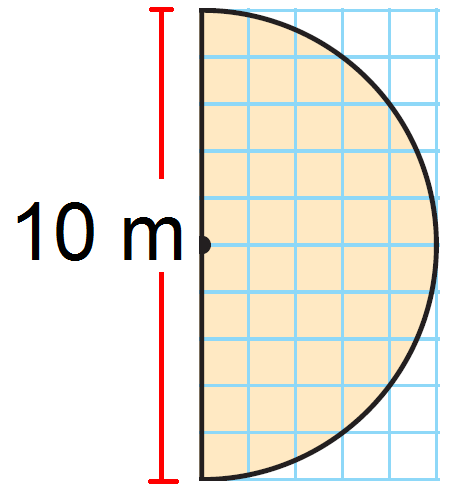
Diameter = 10 m
Radius (r) = Diameter/2
= 10/2
= 5 m
Use the formula.
A = (1/2)πr2
= (1/2)(3.14)(5)2
= 1.57 x 25
= 39.25
The area of the semi circle is about 39.25 square meter.
Step 4 :
Add the areas to find the total area.
A = 100 + 39.25
= 139.25
So, the area of the given composite figure is about 139.25 square meter.
Example 4 :
Find the area of the composite figure.

Solution :
Area of composite figure = area of kite + area of parallelogram
Area of kite = (1/2) x d1 x d2
Area of parallelogram = base x height
Area of kite = (1/2) x 6 x 9
= 27 square feet
Area of parallelogram = 4 x (9 - 6)
= 4 x 3
= 12 square feet
Area of composite figure = 27 + 12
= 39 square feet
Example 5 :

Solution :
Area of composite figure = area of sector + area of equilateral triangle
= (θ/360)πr2 + (√3/4)a2
= (74/360) x 3.14 x 102 + (√3/4) x 102
= 0.205 x 3.14 x 100 + (1.732/4) x 100
= 64.54 + 43.3
= 107.84 square meter
Example 6 :

Solution :
Area of composite figure = area of hexagon + area of trapezium
Side length of hexagon = 9 inches,
Apothem = 7 inches
Parallel sides of trapezium = 15 inches and 9 inches
height = 7 inches
= (1/2) x perimeter x apothem + (1/2) x h x (a + b)
= (1/2) x 6 x 9 x 7 + (1/2) x 7 (15 + 9)
= 3 x 9 x 7 + (1/2) x 7 x 24
= 189 + 84
= 273 square inches
Example 7 :

Solution :
Area of composite figure = area of pentagon + area of rhombus + area of right triangle
= (1/2) x perimeter x apothem + (1/2) x (d1 + d2) + (1/2) x base x height
= (1/2) x 6(5) x 5.1 + (1/2) x (10 x 6.6) + (1/2) x 4 x 6
= (3 x 5 x 5.1) + (5 x 6.6) + (2 x 6)
= 76.5 + 33 + 12
= 121.5 cm2
Subscribe to our ▶️ YouTube channel 🔴 for the latest videos, updates, and tips.
Kindly mail your feedback to v4formath@gmail.com
We always appreciate your feedback.
©All rights reserved. onlinemath4all.com
Recent Articles
-
10 Hard SAT Math Questions (Part - 38)
Dec 08, 25 12:12 AM
10 Hard SAT Math Questions (Part - 38) -
SAT Math Practice
Dec 05, 25 04:04 AM
SAT Math Practice - Different Topics - Concept - Formulas - Example problems with step by step explanation -
10 Hard SAT Math Questions (Part - 37)
Dec 03, 25 07:02 AM
10 Hard SAT Math Questions (Part - 37)


